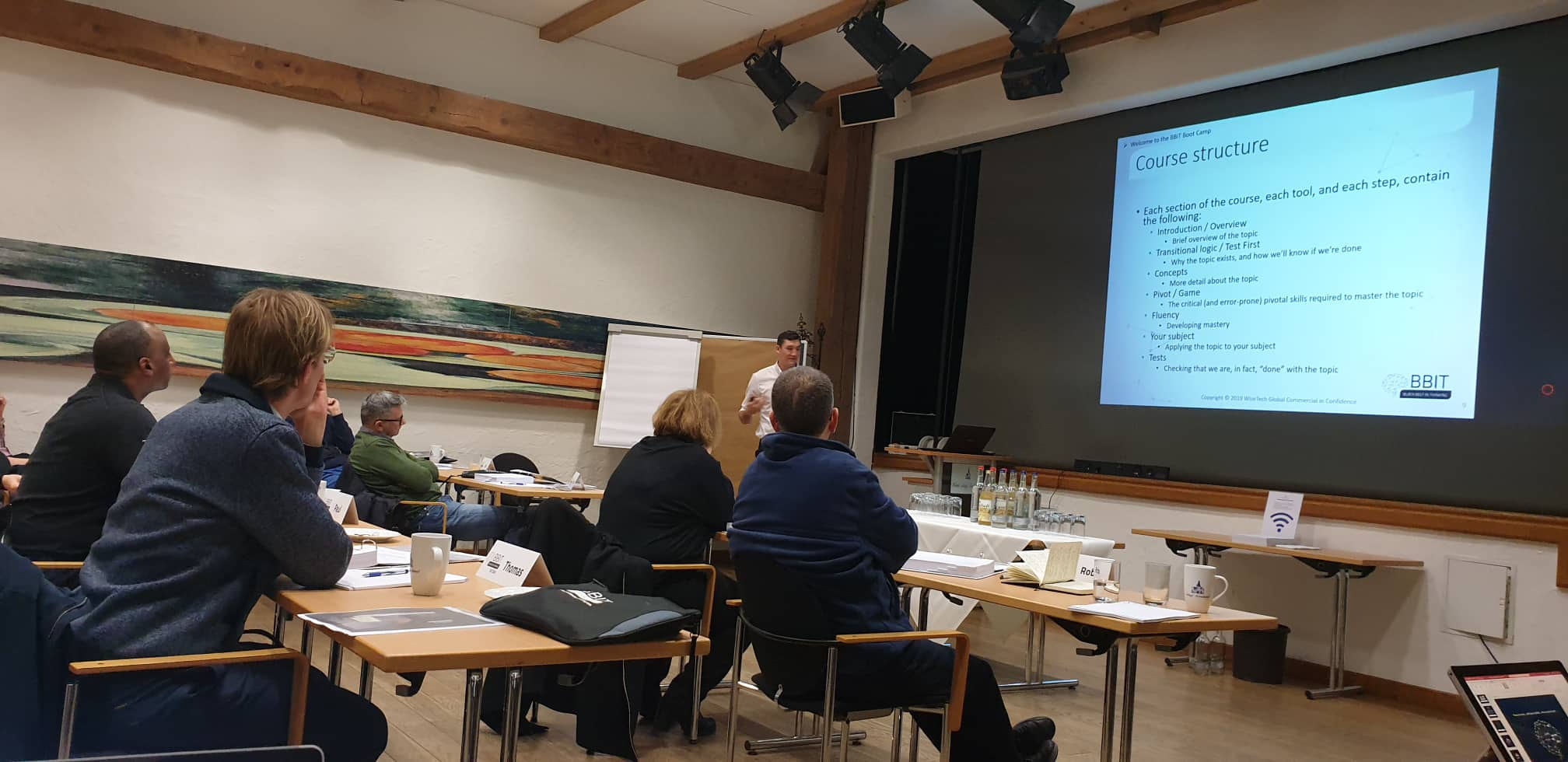Our Black Belt in Thinking (BBIT) Boot Camp has always been an atypical programme. Teaching people problem-solving and decision-making techniques means changing the way they see and think about problems. It means training a critical thinking skillset. In a way, this involves changing the way people’s brains work.
The process of taking this live, week-long intensive training programme and converting it into a high value online course thus has its ups and downs. By far, the most interesting bit has been the journey of trying to figure out what works online and what doesn’t.
There are three parts to this story. Firstly, we’ll look at the key elements of the new course, which might help you in developing an online course of your own. In Part 2 of this series, we’ll delve into the journey we went through to get the online course up and running so you can draw some inspiration and ideas. In Part 3 we’ll give you the core information of what we have as part of the course and why we have those elements so you can choose what elements you may wish to include in your course.
Little bit of background
The BBIT Boot Camp was designed to be a course like no other in its field. Though none of the processes, tools or techniques we taught on the original course were ours; the way it was taught was.
The core of our course was fluency. And there was no way to build fluency in just two days, where people came to learn the theory, do a little bit of application, and then leave. This is the difference between education and training. Participants had to leave the course trained, as well as tired.
The original course ran for eight days, starting at 7am and running late into the night on some days. This was the best way to get participants to develop the skills and to apply them to a detailed analysis. Though over the course of the years, the course went through some decent changes, resulting in decreased late nights and an increase in quality of work and learning.
Re-engineering the course, even before Covid-19
While the course was an amazing feat of tuning and rewiring people’s minds to think more clearly and solve problems more effectively, it was not without fault. We would have liked it to be shorter, without compromising quality, and the analysis method to be more process driven. On top of that, there were sections that tipped people’s minds over the edge. Cognitive overload was real and trackable.
The breakthrough was a new way of analysing individual problems. We had a simple decision-making tool, and a complex full-blown analysis tool. The Druid tool, as it would become known, brought the benefits of both into one. Individual problems, formed as Druids could then be combined to create the full-blown analysis in a much easier and more reliable process.
Through further tweaks, we realised the two bits that needed most attention were:
- Reducing cognitive overload
Sort of like computers chips, when we start to think harder, our heads get hotter. And it hits a certain point where it just can’t handle any more new information. It freezes. Nothing more makes sense. To quote a participant at a section of the course that’s known to induce cognitive overload: “If you had asked me to poke out my tongue at that point, I would have punched you in the face for being unreasonable”. Definitely not a desirable effect of the course.
The course is hard. And it is to be expected that people’s brains will hurt. Surprisingly, that’s even where we learn best. Still, to reduce the feeling of cognitive overload, we decided to introduce the concepts of the common high-level thinking points earlier in the course. We’ve also structured the format to take some burden off overloaded points. So, for example, using the format of one tool as the review process at the beginning of each day, rather than trying to squish add that tool as yet another new thing to learn at the end of a long week. When the tool came up, it was familiar and easy, a far cry from the frustrations of earlier courses which lead to the punch in the face comment.
- Increasing pivot points
We found that there was a key element of each thinking tool that when once understood, made the whole tool ‘click’ and becomes ‘crystal clear’. We call these pivots, or more specifically, pivot points in understanding because prior to this understanding, learners were simply unclear of the tool and do not know how to use it. Interestingly, pivot points also line up with the largest hidden benefit of the tools. Each tool has the implicit benefit, which you get from using the tool, and a hidden benefit, which is a change to the way you think once you become fluent with the tool.
So, once we identified these pivot points, we built pivot-focused activities and group sessions to build the skill. The trick to this is two-fold. Firstly, you need highly repetitive activities, so you get to drill in the pivot skill. Secondly, you need to create an environment where people drop their filters. Filters are what school has drummed into us about now wanting to say something wrong and therefore, filtering things in our head. This doesn’t work as a beginner because you need practise over quality.
All that was done, even before Covid-19. To find out how we eventually moved to fully digitise the course, read Part 2 of this series.

